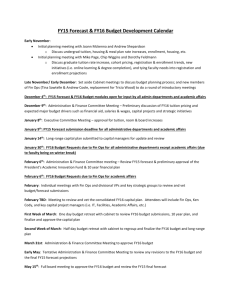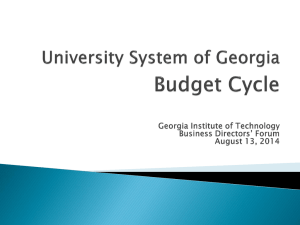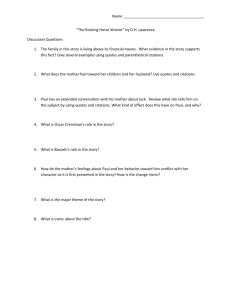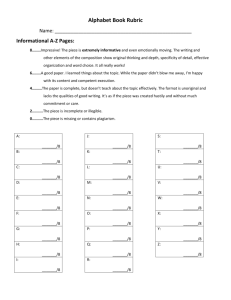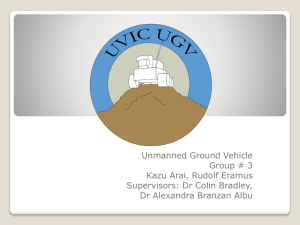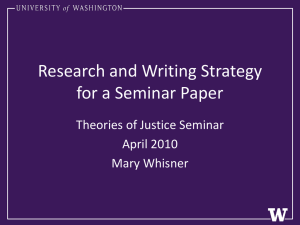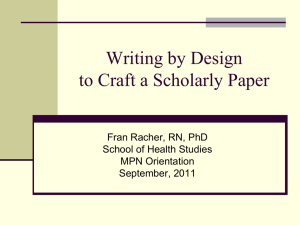abstract - Real World Design Challenge
advertisement
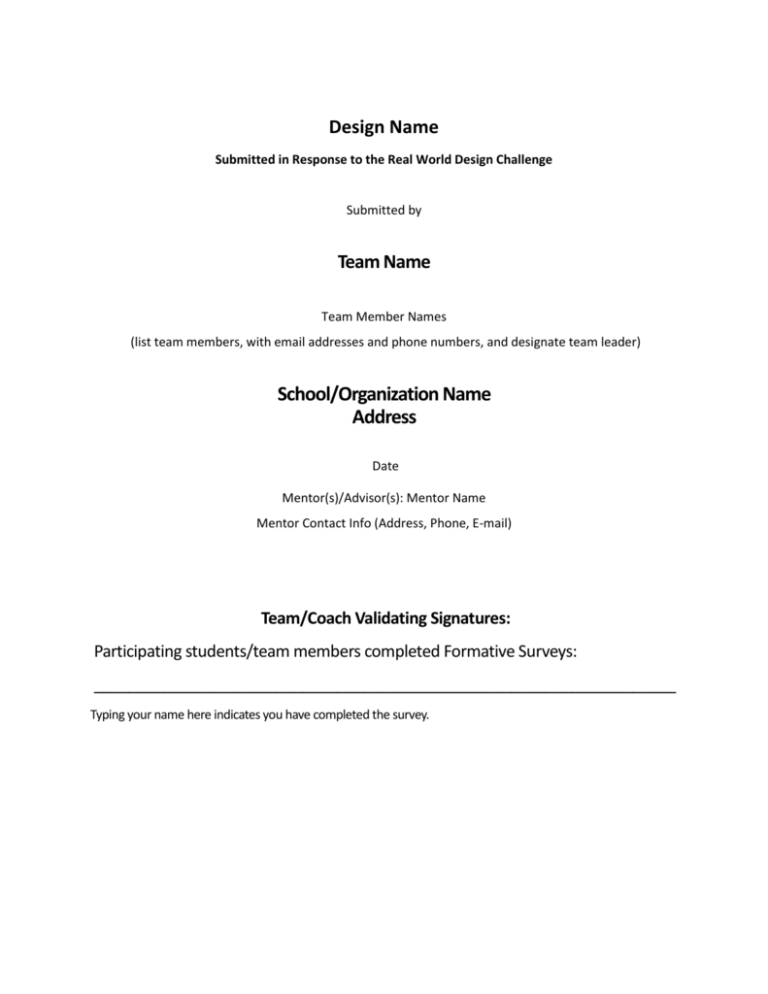
Design Name Submitted in Response to the Real World Design Challenge Submitted by Team Name Team Member Names (list team members, with email addresses and phone numbers, and designate team leader) School/Organization Name Address Date Mentor(s)/Advisor(s): Mentor Name Mentor Contact Info (Address, Phone, E-mail) Team/Coach Validating Signatures: Participating students/team members completed Formative Surveys: ___________________________________________________________________ Typing your name here indicates you have completed the survey. Table of Contents ABSTRACT ............................................................................................................................ 1 1. Team Engagement .......................................................................................................... 2 1.1 Team Formation and Project Operation ........................................................................ 2 1.2 Acquiring and Engaging Mentors .................................................................................. 2 1.3 State the Project Goal ................................................................................................... 2 1.4 Tool Set-up/Learning/Validation .................................................................................... 2 1.5 Impact on STEM ........................................................................................................... 2 2. Document the System Design ......................................................................................... 3 2.1 Conceptual, Preliminary, and Detailed Design .............................................................. 3 2.2 Selection of System Components ................................................................................. 3 2.3 System and Operational Considerations ....................................................................... 4 2.4 Component and Complete Flight Vehicle Weight and Balance ...................................... 4 2.5 Design Analysis ............................................................................................................ 4 2.6 Structural Analysis ........................................................................................................ 5 2.7 Operational Maneuver Analysis..................................................................................... 5 2.8 CAD models .................................................................................................................. 5 2.9 Three View of Final Design ........................................................................................... 5 3. Document the Detection Plan .......................................................................................... 6 3.1 Moisture Detection Pattern ............................................................................................ 6 3.2 Theory of Operation (Example Detection) ..................................................................... 6 3.3 Detection Considerations .............................................................................................. 6 3.4 Detection Time and Resource Requirements ................................................................ 6 4. Document the Business Case ......................................................................................... 7 4.1 Additional Commercial Applications .............................................................................. 7 4.2 Amortized System Costs ............................................................................................... 7 4.3 Market Assessment....................................................................................................... 7 FY16 Real World Design Challenge Page ii 4.4 Cost / Benefits Analysis and Justification ...................................................................... 7 5. References ...................................................................................................................... 8 6. Writing/Format [Remove this section from Final Document] ............................................ 9 6.1 References and Citations .............................................................................................. 9 6.2 Tone of Writing/Professional Appearance ....................................................................10 6.3 Figures and Tables ......................................................................................................10 List of Figures Figure 1. Three View of Final Unmanned System Design. ......................................................... 5 Figure 2. Description phrase to be used as title and description. [If not original] Reprinted [or adapted] from Title (page number), by Author first initial. Second initial. Surname, year, place of publication: Publisher. Copyright [Year] by the Name................................................................11 List of Tables No table of figures entries found. FY16 Real World Design Challenge Page iii ABSTRACT [One page summary includes brief narrative describing the design solution (describe purpose of this document, but without reference citations). Judges will be looking for the ability to express comprehension, and linkage between the design solutions and what students have learned. This section is worth 15 points.] The following references provide examples and considerations for writing an abstract: http://www.indiana.edu/~wts/pamphlets/abstracts.shtml http://writingcenter.unc.edu/handouts/abstracts/ Keywords: [Add appropriate keywords regarding your abstract and project here] FY16 Real World Design Challenge Page 1 1. Team Engagement 1.1 Team Formation and Project Operation [Explain the degree to which teams develop a strategy to win that includes establishing leadership in project management, science, engineering, mathematics, marketing and communications, etc. What skillset does each member bring to the team?] 1.2 Acquiring and Engaging Mentors [Describe the degree to which your team worked aggressively to identify and leverage mentors early and throughout the challenge process.] 1.3 State the Project Goal [Demonstrate understanding of the parts of the Challenge Statement (objective function and design variables) and how they relate to the project goal. Has the team listed and demonstrated an understanding of each and the relationship to the design solution?] 1.4 Tool Set-up/Learning/Validation [Degree to which the team described how they overcame challenges and came up with workable solutions for technical issues: installing and operating tools (Creo, MathCAD, Windchill), learning to use the tools, and validating that the tools are working as needed.] 1.5 Impact on STEM [Discuss how participating in this challenge has influenced your perspectives on STEM, and on your potential career paths. Also discuss the impact the Challenge has had on STEM interests in your school.] FY16 Real World Design Challenge Page 2 2. Document the System Design 2.1 Conceptual, Preliminary, and Detailed Design [Discuss research, analysis, considerations, design decisions, and supporting rationale for each of the following subsections: (provide introduction here)] 2.1.1 Engineering Design Process [Discuss the engineering design processes that were considered. Identify the rational supporting why you chose the selected method.] 2.1.2 Conceptual Design [Discuss the many conceptual designs you considered early in the process. Identify how many conceptual designs were considered and what rationale affected considerations.] 2.1.3 Preliminary Design [Discuss how the team explored the design space including the relative merits of each candidate design.] 2.1.4 Detailed Design [Discuss the refinement analysis processes leading to final design. What data analysis was performed to confirm viability of design and appropriateness of element/component selections?] 2.1.5 Lessons Learned [Discuss key lessons that were learned in each design phase.] 2.1.6 Project Plan Updates and Modifications [Discuss adjustments that were needed to the project plan to keep preliminary design activities on track. Identify how many design iterations were developed.] 2.2 Selection of System Components [Discuss selection of key items, including selection process, design decisions, and supporting rationale for each of the following subsections: (provide introduction here)] 2.2.1 Payload Selection [Provide detailed description of components selected for the payload element, including cost, number required, and justification of why components are the most appropriate/beneficial option available] FY16 Real World Design Challenge Page 3 2.2.2 Air Vehicle Element Selection [Provide detailed description of components selected for the air vehicle element (airframe configuration, powerplant [propulsion], flight controls, and onboard sensors), including cost, number required, and justification of why components are the most appropriate/beneficial option available] 2.2.3 Command, Control, and Communications (C3) Selection [Provide detailed description of components selected for the C3 element (user interface, control station, control type [autonomous, semi, and/or manual], and communications equipment), including cost, number required, and justification of why components are the most appropriate/beneficial option available] 2.2.4 Support Equipment Selection [Provide detailed description of components selected for the support equipment element, including cost, number required, and justification of why components are the most appropriate/beneficial option available] 2.2.5 Human Resource Selection [Provide detailed description of components selected for the human resource element (crew and operators), including cost, number required, and justification of why components are the most appropriate/beneficial option available] 2.3 System and Operational Considerations [Discuss the tradeoffs of systems and operational considerations (e.g., FAA regulations) and their impact on your final design. What major considerations were necessary to find a balanced approach to maximize efforts towards the components of the objective function (airframe efficiency, airframe costs, and business profitability)?] 2.4 Component and Complete Flight Vehicle Weight and Balance [Provide results of the weight and center of gravity analysis] 2.5 Design Analysis [Demonstrate by analysis compliance with design requirements outlined in design variables, aircraft constraints, and assumptions background information (see FY16 RWDC State Unmanned Aerial System Challenge: Moisture Detection in Precision Agriculture document). Include aerodynamics (CL, CD, CM) analysis here.] FY16 Real World Design Challenge Page 4 2.6 Structural Analysis [Demonstrate by analysis that vehicle complies with limit loads] 2.7 Operational Maneuver Analysis [Demonstrate by analysis that vehicle can perform required maneuvers to support your proposed flight operations. Include load limit analysis in this section] 2.8 CAD models [Include images of your detailed design from Creo Software and upload final CAD models on Windchill.] 2.9 Three View of Final Design [Include overall flight vehicle dimensions.] The following, Figure 1, depicts the three view of the final unmanned system design. [ADD FIGURE-CENTERED] Figure 1. Three View of Final Unmanned System Design. FY16 Real World Design Challenge Page 5 3. Document the Detection Plan 3.1 Moisture Detection Pattern [Document your proposed moisture detection pattern. Include any differences between the detection time periods.] 3.2 Theory of Operation (Example Detection) [Detail how your system would conduct the example detection from beginning to end, including any required refueling. Include any differences between the detection time periods.] 3.3 Detection Considerations [What are the major considerations necessary to support your theory of operation and detection strategy? Must include at least: (a) How did the choice of crop affect your design and detection strategy? (b) What effect did the three detection time periods have on your design and detection strategy? (c) How did the choice of your moisture sensor(s) affect your design and detection strategy? (d) What major considerations were necessary to find a balanced approach to maximize efforts towards the three key components of the objective function (airframe efficiency, airframe cost, and business profitability)? (e) How does you method compare to current conventional moisture detection methods?] 3.4 Detection Time and Resource Requirements [Calculate the time, manpower (human resource element) requirements, and show the mission profile for your system to complete the example mission.] FY16 Real World Design Challenge Page 6 4. Document the Business Case 4.1 Additional Commercial Applications [Consider other uses of your unmanned system. Discuss what could be achieved if regulatory restrictions (i.e., Government rules, regulations, and licensure) were eased.] 4.2 Amortized System Costs [Determine the total cost and "per mission" cost for the number of envisioned missions (e.g., 50 or more). (provide introduction here)] 4.2.1 Initial Costs [Initial cost required to design and assemble the entire system.] 4.2.2 Direct Operational Cost per Mission [Total cost required to operate the system (manpower, fuel, etc.) for the example mission. Manpower requirements should be based on the RWDC Crew Requirements – deviations from these are allowed but must be justified.] 4.2.3 Amortization [In order to determine a reasonable "total cost per mission," the initial costs should be spread out over the anticipated life of the system. As a good approximation, add the initial system cost and the total operational cost per mission for the total number of anticipated missions and then divide this total cost by number of anticipated missions. Keep in mind that some reasonable "profit margin" would need to be added to this total-per-mission-cost in order to determine an actual market price, though that is not required at this time.] 4.3 Market Assessment [Assess the competitiveness of your system at your cost. This can be done by comparison to other types of systems which do similar missions (manned aircraft, for example) or by comparison to others who conduct moisture detection.] 4.4 Cost / Benefits Analysis and Justification [Clearly show your cost / benefits analysis which drove your major design choices and sensor payload selection. (Why is your vehicle able to do this mission less expensively than another, or why is it a better value?) Place special emphasis on justifying the decisions your team made with respect to cost when compared to other options. What was necessary to find a balanced FY16 Real World Design Challenge Page 7 approach to maximize efforts towards the other key components of the objective function (airframe efficiency and airframe cost), while improving business profitability?] 5. References This is where the details of any reference citations are maintained. Do not include a reference citation in the References section, if it has not been directly cited in the body of this document. These references should be ordered alphabetically. If any of the reference have the same author and year, place in order by the first word in the title and add an alphabetical identifier to the year (e.g., 2012a) and ensure this year and identifier is used in any in-text citations. See the following list for APA formatting of required references: https://owl.english.purdue.edu/owl/resource/560/06/ FY16 Real World Design Challenge Page 8 6. Writing/Format [Remove this section from Final Document] In addition to specified content, this document will be judged on quality and organization of material. Neat, orderly and readable, font size no smaller than 11 Arial throughout with 1.5 line spacing, except in Abstract, Captions and References (single spaced); pages numbered. The Engineering Design Notebook should follow the paragraph order of the Scoring Rubric including paragraph numbering. The Engineering Design Notebook submission is to be limited to 80 pages maximum including cover page and appendices. 6.1 References and Citations [Remove this section from Final Document] Reference citations are to be used, where appropriate, to support work. Use the following research and reference guidelines in the development of your submission: 1) You should have references identifying the merit of your proposed research and supporting any assertions you make. As part of this process you need to perform a basic literature review and identify supporting material as part of your proposal. Add references and citations to support why your research is worth pursuing. What is the value of performing it? What will it identify that other research has not? Provide some detail regarding any problems or issues that can be used as rationale to support why this is valuable. 2) Add a supporting citation to every sentence that is not entirely your own observation. It is good practice to use supporting citations as it lends credibility to what you are stating. Add citations throughout document when you state something that is not your own original thought. If you do not cite a source and it is not your original thought it is PLAGIARISM. 3) When you have more than one sentence in your quote use a block quote format. a. See References->Direct Quotation on the Purdue online writers lab (OWL) website for further detail: http://owl.english.purdue.edu/owl/resource/560/24/ b. See the following block quotation: Every sentence that contains information that is not ENTIRELY your own words or thoughts needs to contain the citation for the source from which it came. Even if this means citing almost every sentence of a paragraph, it must be done. You can, however, build citations into your sentence throughout the paragraph to avoid an excess of parenthetical documentation at the end of each sentence (APA Frequently Asked Questions…, p.2). FY16 Real World Design Challenge Page 9 4) All direct quotes need a page, section, or paragraph number reference (e.g., Terwilliger, 2012, p. 4). 6.2 Tone of Writing/Professional Appearance [Remove this section from Final Document] Avoid an informal or narrative tone. Instead focus on use of formal tone in academic writing as described in the following materials: http://writingcommons.org/stylecc/word-choice/661-use-appropriate-academic-language http://writingcenter.waldenu.edu/1082.htm http://www.grossmont.edu/karl.sherlock/English098/Resources/Academic_Tone.pdf Use the following grammatical and writing guidelines in the development of your submission: Always spell check First time use should define an acronym. For example, “The use of unmanned aircraft systems (UAS) has served to reduce risk to humans by removing the crew from a hazardous operating environment (U.S. GAO, 2008).” Subsequent uses through the remainder of the document should be, “UAS.” Paragraphs should be at least three sentences long Spell out numbers under 10 Use numerals for numbers over nine When referring to a variable, such as population (N), it should be in italics Refrain from using contractions (e.g., don’t, can’t, didn’t, etc…). See the following for some good tips: http://classweb.gmu.edu/biologyresources/writingguide/PracticalTips.htm Avoid colloquial, superlative, or slang expressions in scientific/academic writing (e.g., on the other hand) Refrain from self-referencing (e.g., I, myself, me) in scientific/research writing. If you must refer to yourself, do it in the third person. For example, the researcher will… 6.3 Figures and Tables [Remove this section from Final Document] Figure and table reference should appear in the following format (always precede the caption and image/table with an in-text reference to explain or depict the connection to the text). For example, Figure 2 depicts an example for the purposes of explaining figure use, reference, and appearance. FY16 Real World Design Challenge Page 10 Figure 2. Description phrase to be used as title and description. [If not original] Reprinted [or adapted] from Title (page number), by Author first initial. Second initial. Surname, year, place of publication: Publisher. Copyright [Year] by the Name. See the following for more detail concerning figure uses: http://rdc.libguides.com/content.php?pid=51657&sid=2045415 FY16 Real World Design Challenge Page 11

